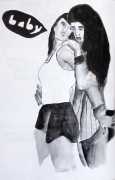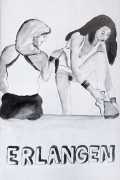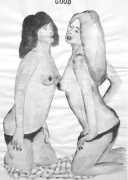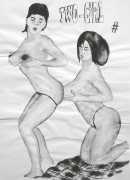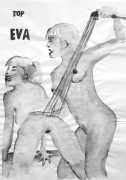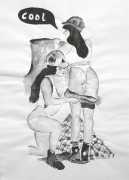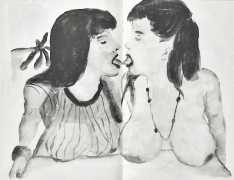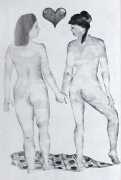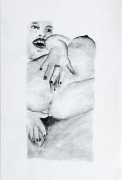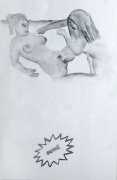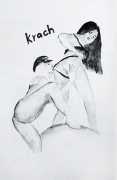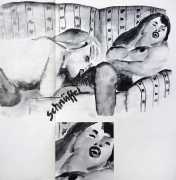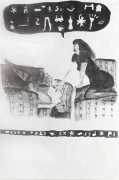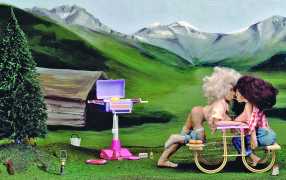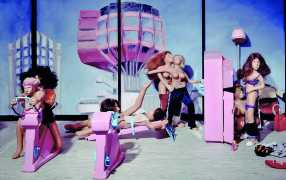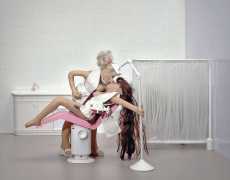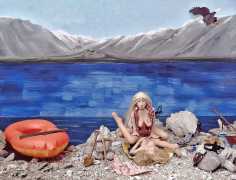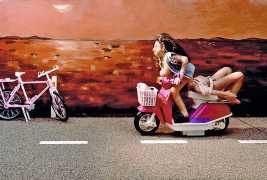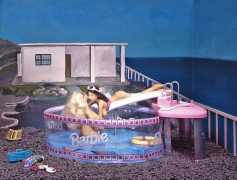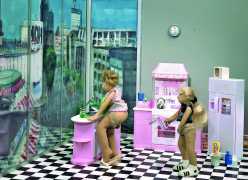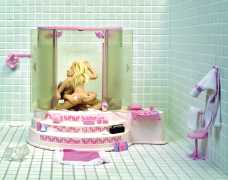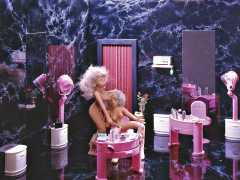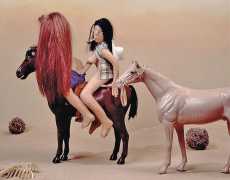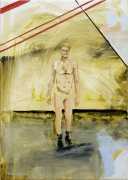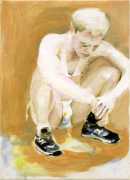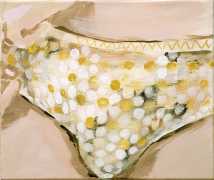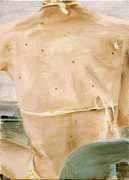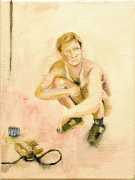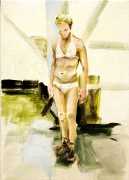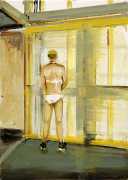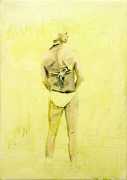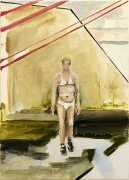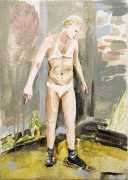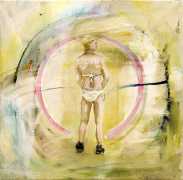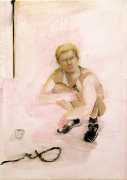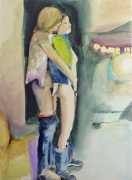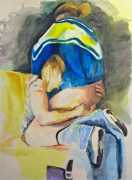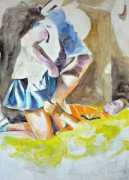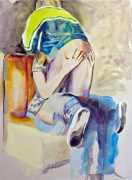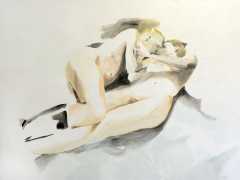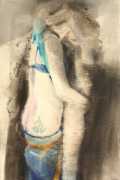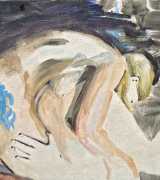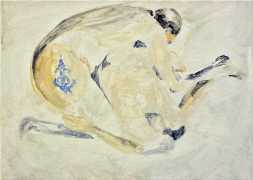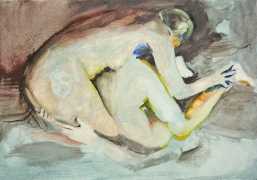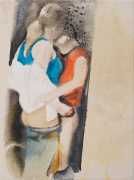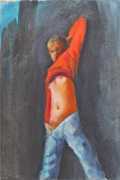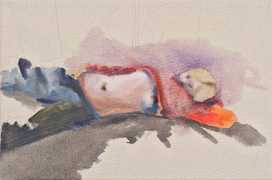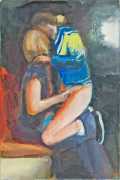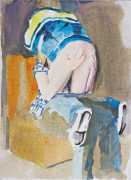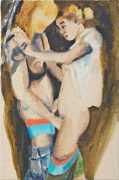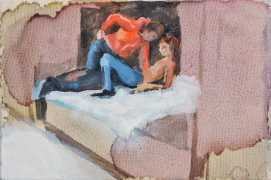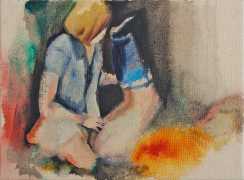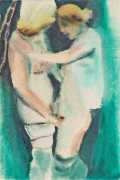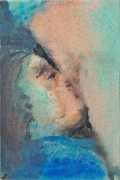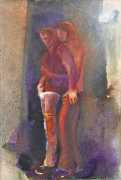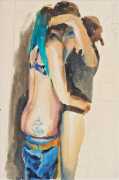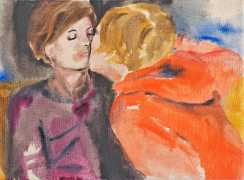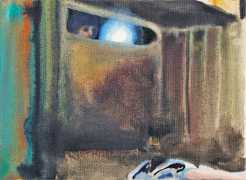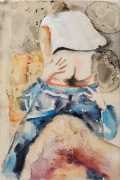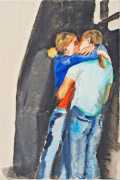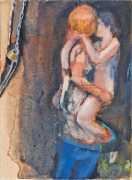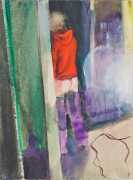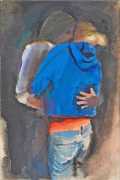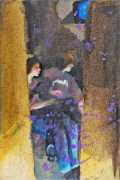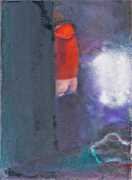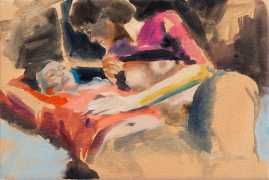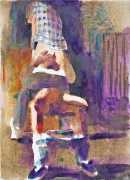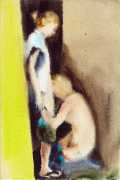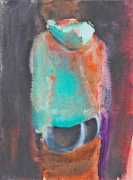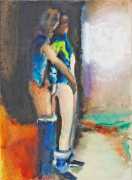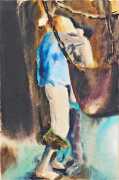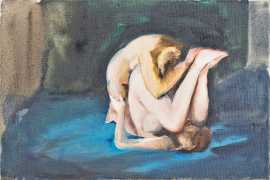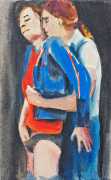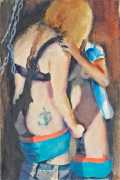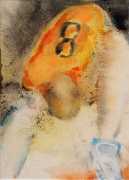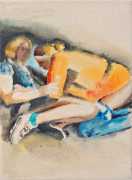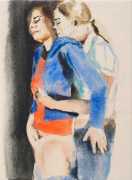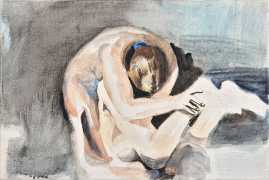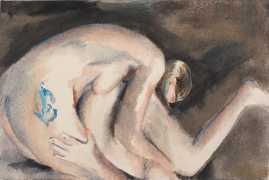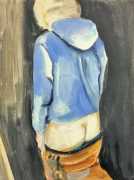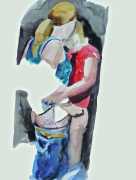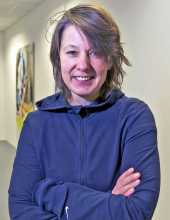 The innovative and multi-talented German artist Kerstin Drechsel grew up in Reinbek, an eastern suburb of Hamburg in northern Germany. From 1987 to 1988 she studied graphics at Fachhochschule (Technical College) in Hamburg, and from 1988 to 1994 for a masters degree in painting and stage design at the Universität der Künste (University of the Arts) in Berlin. She lived and worked in Berlin from 1997 until 2015, exhibiting regularly both in Berlin and then more widely in Germany and at the Vane Gallery in Gateshead in north-east England.
The innovative and multi-talented German artist Kerstin Drechsel grew up in Reinbek, an eastern suburb of Hamburg in northern Germany. From 1987 to 1988 she studied graphics at Fachhochschule (Technical College) in Hamburg, and from 1988 to 1994 for a masters degree in painting and stage design at the Universität der Künste (University of the Arts) in Berlin. She lived and worked in Berlin from 1997 until 2015, exhibiting regularly both in Berlin and then more widely in Germany and at the Vane Gallery in Gateshead in north-east England.
From 2015 to 2021 she was visiting professor in artistic design in visual communications at the Hochschule für Bildene Künste (University of Art) in Braunschweig, and since 2022 has been professor for painting and graphics at the Hochschule für Grafik und Buchkunst (Academy of Fine Arts) in Leipzig.
In 2012 the Vane Gallery interviewed Kerstin Drechsel, and you can find this illustrated ‘Artist Story’ here. We have extracted some of the most interesting questions and responses below.
Can you give us a give a brief introduction to yourself and your artistic practice?
When I was sixteen I saw an opera production that overwhelmed me. It was staged by Achim Freyer, a famous director, stage and costume designer and visual artist. He used the methods of theatre – space, costume, light and being – in a truly integrated way. I knew that I wanted to study with him no matter what he was teaching. His professorship was in stage design and he had a very small class at the Universität der Künste in Berlin. A few years later I became his student for six years. It was really great for me, even though I decided during my studies that my focus would be on fine arts, at that time mainly on painting, but always with an interest in concepts of space.
My personal experiences always have a significant influence on my work, including lesbian and queer life, order and disorder, and a questioning of traditional roles like motherhood.
The overarching theme of my work is to question painting and its limitations. With the two-dimensional works I always want to make the manner of painting explicitly visible. The limitations I am questioning concern those of space, and also of the kinds of narratives being visualised. As I play with genre subjects like portrait, nude and still life, I try to open them up in a direction that brings a new narrative and perspective to them by including queerness and other non-normative topics that have not often been explored in the visual arts.
Much of your work explores the ways different communities – especially queer communities – express their identities. What drives you to focus on identity?
Identity has always been important to me, particularly queer identity. I felt that I wanted to tell something about my own life which at the same time told something about the lives of many other queer people. When I started dealing with these themes in my art, it wasn’t very popular. When I referenced porn images to tell my own story about being a queer/lesbian, I had some harsh negative responses, not so much criticised directly for the images but more for the way I painted them.
Because I’m part of the community that I represent in my paintings, you could say that I have an authentic gaze. But what is an authentic gaze? I’m sceptical about the term because every gaze and every artistic interpretation includes appropriation.
I don’t think about the viewer when I’m developing a work. I just want to tell something about human life. My work always borders on voyeurism, and as a result I question the starting point at which a gaze becomes voyeuristic.
What makes you choose the groups of people you represent in your work?
I choose the subjects because they enable me to speak about my personal experience and define myself as a queer lesbian woman. I like the play between so-called boyish and girlish, not fixing a clear direction. A lot of my work deals with questioning the norms of femininity or questioning a gender role fixation.
Is the bigger ‘political’ statement in your work as important as the ‘personal’ content?
Personal experience and political content can’t be separated. I’m a political person, I go to demonstrations, I protest against injustice, but I’m not an activist. My language is art, and through my art I try to address political issues.
How does feminism influence your work?
Historically, art that deals with the erotic has been made by male artists objectifying and exploiting female bodies; my work reclaims that territory and uplifts the women involved. Where I clearly refer to porn, such as the In Wärmeland series, I examine the core elements of pornography – stereotypes, attitudes, the reduction of women’s bodies to the orifices that have become the focus of sex – but I also show the absurdity of this by playing with the clichés inherent in the genre.
What do you see as the deeper meaning in your work?
In terms of subject matter I’m always concerned with people, their entangled relationships, human existence. I would like the viewer to be involved in the work, to latch onto points where they feel reminded of something from their own lives. For me it’s ideal when a connection is created between my work and the viewer, which at the same time means creating an opening into the viewer’s own associations. The viewer complements and completes the work.
Kerstin Drechsel’s website can be found here.
We are very grateful to our Russian friend Yuri for introducing us to the work of this artist, and for supplying some of the images.


